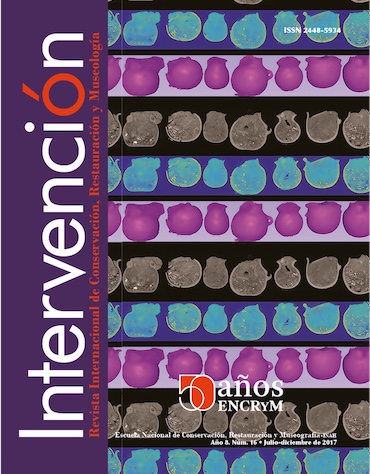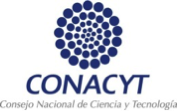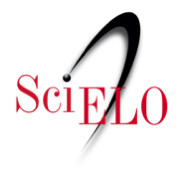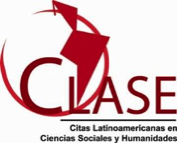De la historia natural a la biología moderna: máquinas, robots y cabinas de vuelo en el Natural History Museum (NHM, Museo de Historia Natural), Londres, Reino Unido
DOI:
https://doi.org/10.30763/Intervencion.2017.16.179Palabras clave:
museos de historia natural, Londres, comunicación de la ciencia, metáforas visuales, interactividadResumen
El presente ENSAYO ofrece una mirada al Natural History Museum (NHM, Museo de Historia Natural), Londres, Reino Unido, entre finales de la década de 1960 y principios de la de 1980 con la finalidad de explorar la forma en que entonces cambió tanto su identidad institucional como su política expositiva. Intento mostrar que, con la idea de modificar su imagen, el modelo de discurso museográfico del NHM dejó de centrarse en su colección —esto es, los especímenes de historia natural— para consagrarse a los visitantes y prestar especial atención al nuevo enfoque de la biología contemporánea. Para ello se plantea que Human Biology, primera exposición del Nuevo Programa de Exposiciones (NPE) del NHM, se diseñó en concordancia con la tendencia reduccionista que caracterizaba a la ciencia contemporánea, estructurada en torno de los sistemas de información. Gracias a esta orientación, Human Biology se convirtió en un espacio de producción y legitimación de una particular perspectiva científica, muy cercana a la enarbolada por los asesores externos que colaboraron en la especificación de sus contenidos museográficos, desplegados, así, a partir de metáforas visuales y estrategias interactivas.
Descargas
Citas
Alt, Michael (1979). “Letter from Alt to unknown addresseed over the critics of Anthony Smith to the Human Biology exhibition”, Londres, Archivo del Museo de Historia Natural, número de referencia DF EXH/700/4.
______ (1980). “Four years of visitor surveys at the Natural History Museum (1976-1979)”, Londres, Archivo del Museo de Historia Natural, número de referencia DF EXH/701/23/10.
Anón. (1981). “Letter”, Nature 289 (5797): 438.
Arnold, Ken (1996). “Presenting science as product or as process: Museums and the making of science”, en Susan Pearce (ed.), Exploring Science in Museums, Londres, Althone Press, 53-78.
Bloom, Joel (1992). “Science and technology museums face the future”, en J. Durant (ed.), Museums and the Public Understanding of Science, Londres, Science Museum, 15-20.
Cannon, John (1962). “The new Botanical Exhibition Gallery at the British Museum (Natural History)”, Taxon 11 (8): 248-252.
Claringbull, Frank (1974). “New exhibition scheme: aspects of human development”, Londres, Archivo del Museo de Historia Natural, número de referencia DF EXH/700/4/1.
Claringbull, Frank y Lawrence Bragg (1965). Crystal structures of minerals, Londres, George Bell & Sons.
Cloître, Michel y Terry Shinn (1985). “Expository practice. Social, cognitive and epistemological linkage”, en T. Shinn y R. Whitley (eds.), Expository science: Forms and Functions of Popularisation, Dordrecht/Boston/Lancaster, Reidel, 31-60.
Corral, Gustavo (2015). “Museo de Historia Natural de Londres, 1968-1981. Una perspectiva histórica”, tesis de doctorado en historia de la ciencia, Barcelona, Centre d’Història de la Ciència, Universitat Autònoma de Barcelona (CEHIC-UAB).
______ (2016). “El Museo de Historia Natural de Londres y su nuevo programa de exposiciones [NPE] en la década de 1970. Perfilando nuevos objetivos educativos”, Boletín de la Real Sociedad Española de Historia Natural, Sección Aula, Museos y Colecciones, 3: 5-19.
Chadarevian, Soraya de (2002). Designs for Life: Molecular Biology after World War II, Nueva York, Cambridge University Press.
CSMI (s.f.). Cognitive Science Movie Index, Department of Cognitive Science, University of California, EE.UU, recurso electrónico disponible en [https://www.indiana.edu/~cogfilms], consultado en abril del 2017.
Doughty, Philip (1978). “‘Britain before man’-a review”, Museums Journal, 78 (2): 54-56.
Fifield, Richard (1977). “Heritage. Birth of Britain”, New Scientist, 76 (1075): 238.
Galison, Peter
______ (1994). “The ontology of the enemy: Norbert Wiener and the cybernetic vision”, Critical Inquiry, 21: 228-266.
Gardner, Howard (1985). The Mind’s New Science: A History of the Cognitive Revolution, Nueva York, Basic Books.
Gray, Clive (2015). The Politics of Museums, Londres, Palgrave Macmillan.
Greenaway, Frank (1983). “National museums”, Museums Journal, 83 (2): 7-12.
Griggs, Steven (1990). “Perceptions of traditional and new style exhibitions at the Natural History Museum”, ILVS Review, 1 (2): 78-90.
Haraway, Donna (1991). Simians, Cyborgs and Women: the Reinvention of Nature, Nueva York, Routledge.
Horst, Steven (2011). “The computational theory of mind”, The Stanford Encyclopedia of Philosophy, documento electrónico disponible en [https://plato.stanford.edu/archives/sum2015/entries/computational-mind], consultado en marzo del 2017.
Husbands, Phil y Owen Holland (2012). “Warren McCulloch and the British cyberneticians”, Interdisciplinary Science Reviews, 37 (3): 237-253.
Kay, Lily (1995). “Who wrote the book of life? Information and the transformation of molecular biology, 1945-55”, Science in Context, 8 (4): 609-634.
Lyotard, Jean François (1979). La condition postmoderne: rapport sur le savoir, París, De Minuit.
Macdonald, Sharon (ed.) (1998). The politics of display: Museums, Science, Culture, Londres, Routledge.
Miles, Roger, Michael Alt, David Gosling, Brian Lewis y Alan Tout (comps.) (1982). The Design of Educational Exhibits, Londres, George Allen & Unwin.
Miles, Roger (1976). “Preliminary report on a visit to 18 museums (sensu lato) in North America and Australia, January and February 1976”, Londres, Archivo del Museo de Historia Natural, número de referencia DF700/4.
______ (1979). “First draft paper on the origins of the new exhibition scheme”, Londres, Archivo del Museo de Historia Natural, número de referencia DF EXH/700/4.
______ (1986). “Lessons in ‘Human Biology’”, Museum Management and Curatorship, 5 (3): 227-240.
Miles, Roger y Michael Alt (1979). “British Museum (Natural History): a new approach to the visiting public”, Museums Journal, 78 (4): 158-162.
Miles, Roger y Alan Tout (1978). “Human biology and the new exhibition scheme in the British Museum (Natural History)”, Curator, 21: 36-50.
______ (1979). “Outline of a technology for effective science exhibits”, en Bassett Matthew (ed.), Curation of palaeontological collections. Special Papers in Palaeontology, vol. 22, Londres, Paleontological Association, 209-224.
Morris, Peter (ed.) (2010). Science for the Nation: Perspectives on the History of the Science Museum, Londres, Palgrave Macmillan.
Natural History Museum (NHM) (1972). “A proposal for a new approach to the visiting public”, Londres, Archivo del Museo de Historia Natural, número de referencia NES DR41.
______ (1972b). “Trustees Paper 72/9, new exhibition scheme”, Londres, Archivo del Museo de Historia Natural, número de referencia DF933/1012.
______ (1973). “Trustees Meeting, 22 de febrero de 1973”, Londres, Archivo del Museo de Historia Natural, número de referencia TRU/900/29.
______ (1974). “A new exhibition on aspects of human development”, Londres, Archivo del Museo de Historia Natural, número de referencia EXH/700/4/1.
______ (1974b). “Aspects of human development: Specimen Section of design brief”, Londres, Archivo del Museo de Historia Natural, número de referencia DF EXH/700/4/1/10.
______ (1975). “The new exhibition scheme and its pilot project”, Londres, Archivo del Museo de Historia Natural, número de referencia EXH/700/4/1.
______ (1977a). Human Biology-An Exhibition of Ourselves [catálogo de la exposición], Cambridge, Cambridge University Press.
______ (1977b). “Opening of the New Paleontology Wing and the Hall of Human Biology on 24 May 1977”, Londres, Archivo del Museo de Historia Natural, número de referencia DF700/4/1/37.
______ (s.f.). Images, recurso electrónico [página web] disponible en [https://nhmimages.com/en/page/show_home_page.html], consultado en abril del 2017.
______ (s.f. ). Natural History Museum Archive Catalogue, documento electrónico disponible en [http://www.nhm.ac.uk/research-curation/library/archives/catalogue/DServe.exe?dsqServer=placid&dsqIni=Dserve.ini&dsqApp=Archive&dsqDb=Persons&dsqSearch=Code==%27PX1926%27&dsqCmd=Show.tcl], consultado en marzo del 2017.
Parr, Albert (1959). “Ninetieth annual report of the president”, en American Museum of Natural History, Annual Report of the American Museum of Natural History for 1958, Nueva York, American Museum of Natural History.
Pearson, Lynn (1981). The Organization of the Energy Industry, Londres, Palgrave Macmillan.
Perks, Sue (2012). “A definition of the principles of Isotype and an investigation into their methods of diffusion and legacy”, tesis de doctorado en comunicación visual, Reading, University of Reading.
Pedretti, Erminia (2002). “T. Kuhn meets T. Rex: critical conversations and new directions in science centres and science museums”, Studies in Science Education, 37 (1): 1-41.
Rader, Karen y Victoria Cain (2014). Life on Display: Revolutionizing U. S. Museums of Science and Natural History in the Twentieth Century, Chicago, University of Chicago Press.
Rosen, Brian (2010). Comunicación personal, entrevista realizada por Cathcart Brian para el proyecto de historia oral Museum Lives, Centre for Arts and Humanities Research, Natural History Museum, 16 de febrero de 2010.
Rumelhart, David, Peter Lindsay y Donald Norman (1972). “A process model for long-term memory”, en Endel Tulving y Wayne Donaldson (eds.), Organization of Memory, Nueva York, Academic Press, 197-246.
Seddon, Abell (1979). “An open letter on exhibition in natural history museums”, Newsletter of the Geological Curators Group, 2 (4): 200.
Stearn, William (1981). The Natural History Museum at South Kensington: A History of the British Museum, Londres, Heinemann.
Touraine, Alain (1969). La sociedad post-industrial, Barcelona, Ariel.
Vergo, Peter (1989). The New Museology, Londres, Reaktion Books Ltd.
Whitehead, Peter y Colin Keates (1981). “The British Museum (Natural History)”, Londres, Scala/Philip Wilson.
Woolley, Alan (2014). Comunicación personal, 19 de agosto de 2014.
Publicado
Cómo citar
Número
Sección
Licencia
Derechos de autor 2017 Instituto Nacional de Antropología e Historia (INAH)

Esta obra está bajo una licencia internacional Creative Commons Atribución-NoComercial 4.0.

Atribución-NoComercial 4.0 Internacional
https://creativecommons.org/licenses/by-nc/4.0/deed.es
Usted es libre de:
- Compartir — copiar y redistribuir el material en cualquier medio o formato
- Adaptar — remezclar, transformar y construir a partir del material
Bajo los siguientes términos:
-
Atribución — Usted debe dar crédito de manera adecuada, brindar un enlace a la licencia, e indicar si se han realizado cambios. Puede hacerlo en cualquier forma razonable, pero no de forma tal que sugiera que usted o su uso tienen el apoyo de la licenciante.
-
No Comercial — Usted no puede hacer uso del material con propósitos comerciales.



















